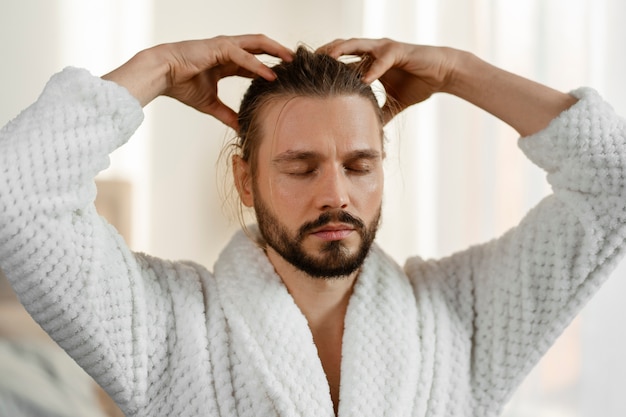
Have you noticed more hair falling out than usual? Hair loss expert Dr. Omar outlines five common causes and shares a proven solution.
Hair can be a huge part of who we are, giving us character, confidence, and personality. Yet, an estimated 8 million women in the UK deal with some form of hair loss or thinning at any point. If you’ve noticed your hair thinning but haven’t talked about it, you’re not alone. About 46% of women with hair loss feel too insecure or embarrassed to discuss it.
It’s normal to lose between 100 to 150 strands of hair a day—it’s all part of the hair growth cycle, which involves three stages, including shedding. Dr. Omar explains that many people don’t realize hair loss is often a treatable condition, though they might turn to unproven supplements and vitamins.
To understand and address hair loss, you need to know about the hair growth cycle and its stages:
1. Growth Phase (Anagen): 85 to 90% of the hair on your head is actively growing during this phase, which lasts three to five years.
2. Transition Phase (Catagen): Hair stops growing and detaches from the follicle, lasting one to two weeks.
3. Resting Phase (Telogen): About 10 to 15% of your hair is inactive for three to four months before shedding.
If you’re losing more hair than usual or it’s not growing back, there could be a problem. Hair loss can happen suddenly or gradually and affects the scalp in various ways.
Signs of hair loss (alopecia) include:
– A disrupted hair growth cycle is often the root cause, shortening the growth phase and extending the resting phase, leading to increased shedding and weaker regrowth.
Identifying the cause of your hair loss is crucial, and Dr. Omar highlights five main triggers:
1. Genetics: Hereditary hair loss is the most common. Known as male-pattern or female-pattern hair loss, it causes gradual thinning or balding. Genetic predisposition means some hair follicles are more sensitive to hair loss. To counteract this, consider hair growth supplements to help rebalance the hair growth cycle.
Proteoglycans play a significant role in hair growth regulation. Inadequate production can disrupt the hair growth cycle, leading to hair loss. Treatments like Proteoglycan Replacement Therapy (PRT), using products like Nourkrin (with Marilex, a fish extract), can help reintroduce essential nutrients to stimulate hair growth.
2. Hormonal Imbalance: Dihydrotestosterone (DHT), a by-product of testosterone, can affect both men and women, causing hair follicles to miniaturize and perish. Hormonal changes, especially during menopause or conditions like PCOS, can lead to hair loss due to fluctuating hormone levels.
3. Stress: High stress levels cause inflammation and increase cortisol, affecting hair health and leading to conditions like telogen effluvium, where hair thins across the scalp. Managing stress is key to improving hair growth.
4. Medications: Drugs treating cancer, high blood pressure, arthritis, depression, and heart problems can cause hair loss by disrupting the hair growth cycle. This may be temporary and might reverse after stopping the medication.
5. Pregnancy: Hormonal changes during and after pregnancy can affect hair growth. Many women experience thicker hair during pregnancy, but postpartum, about 50% of women see excessive shedding, which usually normalizes as hormone levels balance out.
For any type of hair loss, understanding the cause and seeking appropriate treatment is essential. Consulting a doctor or considering Proteoglycan Replacement Therapy with products like Nourkrin can help maintain a healthy hair growth cycle and reduce shedding.